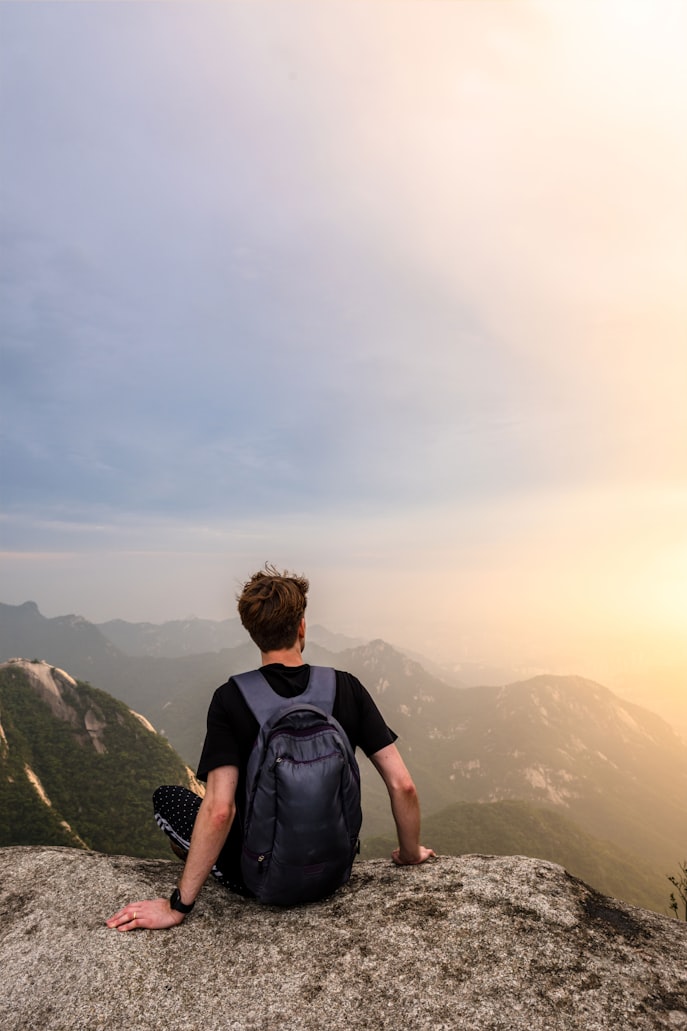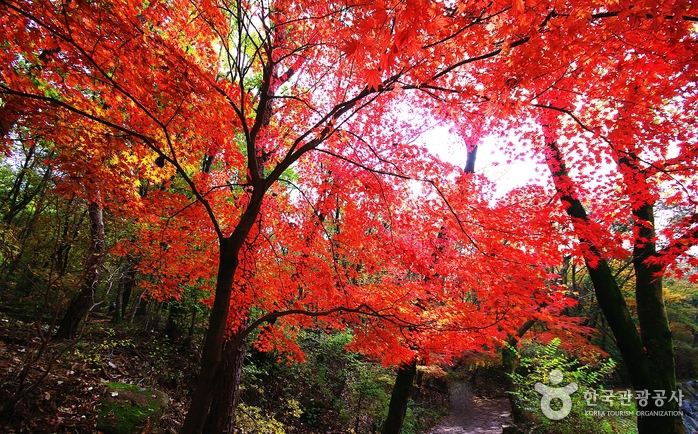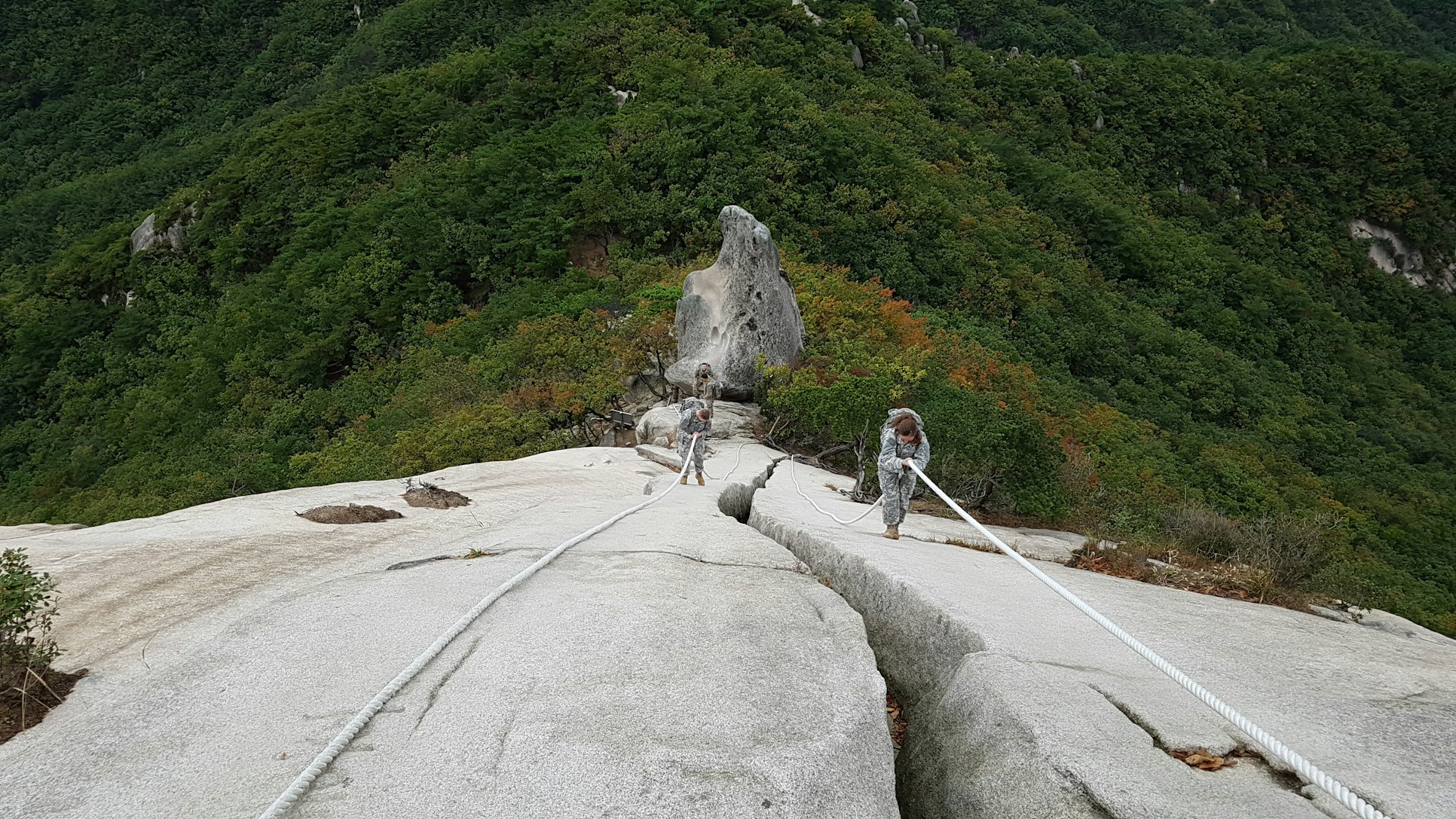5 good mountains to hike in Seoul & How to get there (2023 updates)
Additionally, Seoul has a comprehensive public transportation system, making it easy for hikers to reach the trails. The city also has a strong culture of hiking, and many locals participate in the activity regularly. Additionally, Seoul offers a lot of parks and green spaces, which provide great opportunities for hiking and enjoying nature.
Overall, the combination of natural beauty, accessibility, and a culture of outdoor activities make Seoul an excellent destination for hiking enthusiasts.
5 good mountains to hike in Seoul and how to get there

1. Bukhansan National Park
5 good mountains to hike in Seoul and how to get there

1. Bukhansan National Park
Bukhansan is the most popular mountain for hiking in Seoul, offering stunning views of the city and challenging trails for experienced hikers. It is also a UNESCO World Heritage Site and home to several temples and historical sites.
Bukhansan National Park is home to several historical sites, including the 8th century Baegundae Peak, which is the highest peak in the park and offers beautiful views of the city. The park also includes several temples such as Bukhansanseong Fortress, which was built during the Goryeo Dynasty (918–1392) and served as a military fortress during the Joseon Dynasty (1392–1910).
How to get there : To get to Bukhansan National Park, take the subway to Bukhansan National Park Station on line 3 and then take bus 110B, 704 or 707 to the park entrance.

Bukhansan National Park is home to several historical sites, including the 8th century Baegundae Peak, which is the highest peak in the park and offers beautiful views of the city. The park also includes several temples such as Bukhansanseong Fortress, which was built during the Goryeo Dynasty (918–1392) and served as a military fortress during the Joseon Dynasty (1392–1910).
How to get there : To get to Bukhansan National Park, take the subway to Bukhansan National Park Station on line 3 and then take bus 110B, 704 or 707 to the park entrance.

2. Gwanaksan Mountain
Gwanaksan offers a variety of hiking trails and is a great option for those looking for a more challenging hike. It also offers panoramic views of the city and the surrounding mountains.
Gwanaksan Mountain is home to several historical sites, including Gwaneum-sa Temple, which was built in the 8th century and is dedicated to the bodhisattva of compassion, Avalokitesvara. The mountain also includes the Seonjeongneung, which is the burial site of King Seongjong, the 9th king of the Goryeo Dynasty.
How to get there: To get to Gwanaksan Mountain, take the subway to Gwanak Station on line 1 or line 4 and then take bus 110A, 110B or 709 to the park entrance.

3. Inwangsan Mountain
Gwanaksan Mountain is home to several historical sites, including Gwaneum-sa Temple, which was built in the 8th century and is dedicated to the bodhisattva of compassion, Avalokitesvara. The mountain also includes the Seonjeongneung, which is the burial site of King Seongjong, the 9th king of the Goryeo Dynasty.
How to get there: To get to Gwanaksan Mountain, take the subway to Gwanak Station on line 1 or line 4 and then take bus 110A, 110B or 709 to the park entrance.
3. Inwangsan Mountain
Inwangsan is located in the heart of Seoul and is a popular spot for hiking and rock climbing. It offers beautiful views of the city and is a great option for those looking for a shorter hike.
Inwangsan Mountain is home to several historical sites, including Inwangsa Temple, which was built in the 8th century and is dedicated to the bodhisattva of compassion, Avalokitesvara. The mountain also includes the Inwangdae, which is an observatory built during the Joseon Dynasty and offers beautiful views of the city.
How to get there: To get to Inwangsan Mountain, take the subway to Anguk Station on line 3 and then take bus 2 or 10 to the park entrance.

Inwangsan Mountain is home to several historical sites, including Inwangsa Temple, which was built in the 8th century and is dedicated to the bodhisattva of compassion, Avalokitesvara. The mountain also includes the Inwangdae, which is an observatory built during the Joseon Dynasty and offers beautiful views of the city.
How to get there: To get to Inwangsan Mountain, take the subway to Anguk Station on line 3 and then take bus 2 or 10 to the park entrance.

4. Suraksan Mountain
Suraksan is a great option for those looking for a quieter hike, as it is less crowded than Bukhansan and Gwanaksan. It offers several hiking trails and beautiful views of the surrounding mountains.
Suraksan Mountain is home to several historical sites, including the Surak-sa Temple, which was built during the Goryeo Dynasty and is dedicated to the bodhisattva of compassion, Avalokitesvara. The mountain also includes the Surak-bong Peak, which is the highest peak in the mountain and offers panoramic views of the city.
How to get there: To get to Suraksan Mountain, take the subway to Suraksan Station on line 1 and then take bus 110A, 110B or 709 to the park entrance.
Suraksan Mountain is home to several historical sites, including the Surak-sa Temple, which was built during the Goryeo Dynasty and is dedicated to the bodhisattva of compassion, Avalokitesvara. The mountain also includes the Surak-bong Peak, which is the highest peak in the mountain and offers panoramic views of the city.
How to get there: To get to Suraksan Mountain, take the subway to Suraksan Station on line 1 and then take bus 110A, 110B or 709 to the park entrance.
5. Dobongsan Mountain
Dobongsan is a great option for those looking for a more challenging hike. It offers several hiking trails and is a great spot for rock climbing. The summit of Dobongsan offers panoramic views of the city and the surrounding mountains.
Dobongsan Mountain is home to several historical sites, including the Dobong-sa Temple, which was built during the Goryeo Dynasty and is dedicated to the bodhisattva of compassion, Avalokitesvara. The mountain also includes the Dobong-bong Peak, which is the highest peak in the mountain and offers panoramic views of the city.
How to get there: To get to Dobongsan Mountain, take the subway to Dobongsan Station on line 1 and then take bus 34 or 34-1 to the park entrance.



Comments